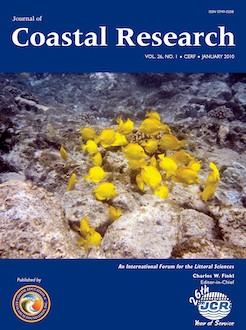In 2001, the U.S. Geological Survey began conducting scientific assessments of coastal vulnerability to potential future sea- and lake-level changes in 22 National Park Service sea- and lakeshore units. Coastal park units chosen for the assessment included a variety of geological and physical settings along the U.S. Atlantic, Pacific, Gulf of Mexico, Gulf of Alaska, Caribbean, and Great Lakes shorelines. This research is motivated by the need to understand and anticipate coastal changes caused by accelerating sea-level rise, as well as lake-level changes caused by climate change, over the next century. The goal of these assessments is to provide information that can be used to make long-term (decade to century) management decisions. Here we analyze the results of coastal vulnerability assessments for several coastal national park units.
Index-based assessments quantify the likelihood that physical changes may occur based on analysis of the following variables: tidal range, ice cover, wave height, coastal slope, historical shoreline change rate, geomorphology, and historical rate of relative sea- or lake-level change. This approach seeks to combine a coastal system's susceptibility to change with its natural ability to adapt to changing environmental conditions, and it provides a measure of the system's potential vulnerability to the effects of sea- or lake-level change. Assessments for 22 park units are combined to evaluate relationships among the variables used to derive the index. Results indicate that Atlantic and Gulf of Mexico parks have the highest vulnerability rankings relative to other park regions. A principal component analysis reveals that 99% of the index variability can be explained by four variables: geomorphology, regional coastal slope, water-level change rate, and mean significant wave height. Tidal range, ice cover, and historical shoreline change are not as important when the index is evaluated at large spatial scales (thousands of kilometers).





